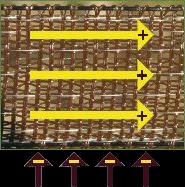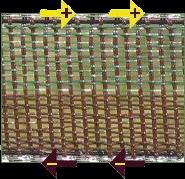Ground Rod
An electric fence functions as an electrical circuit, one of whose components is the earth with the electrical ground connection made in moist soil.
In countries where the soil gets very dry or frozen, its electrical conductivity is reduced to lack of humidity and grounding does not work well or at all. The ground rod is the weakest link in an electric fence installation.
In 1993, to overcome the problem of electrical non-conductivity due to inefficient grounding (in frozen or very dry ground), HorseGuard first re-engineered our own traditional electric tape and then invented bi-polar for continental climates – from desert to sub-arctic.
The HorseGuard system doesn’t need a ground rod. Its bi-polar conductivity is maintained with the positive and negative lines built right into the tape enabling it to be used reliably in ice or snow and hard-packed or dry soil conditions.
Since our original product launch, continuous research and improvements have refined our hi-quality fencing system solutions to be safe, easy to use and built to last.
Before introducing HorseGuard Bi-Polar System to Canada, we had years of extensive experience in several Scandinavian countries with comparable weather to Canada’s.

Traditional HorseGuard tape: The positive (+) is the tape and the negative (-) is the ground.

Bi-Polar HorseGuard Tape: The positive (+) and the negative (-) are on the same tape.
When the horse touches the tape, it receives a significant shock (not dangerous or harmful), either at the end of the nose or throughout the body. This very brief painful memory that develops the mental barrier. Regardless of the quality or condition of the ground, HorseGuard Bi-Polar fence system is an efficient, reliable electric fence, all year round.